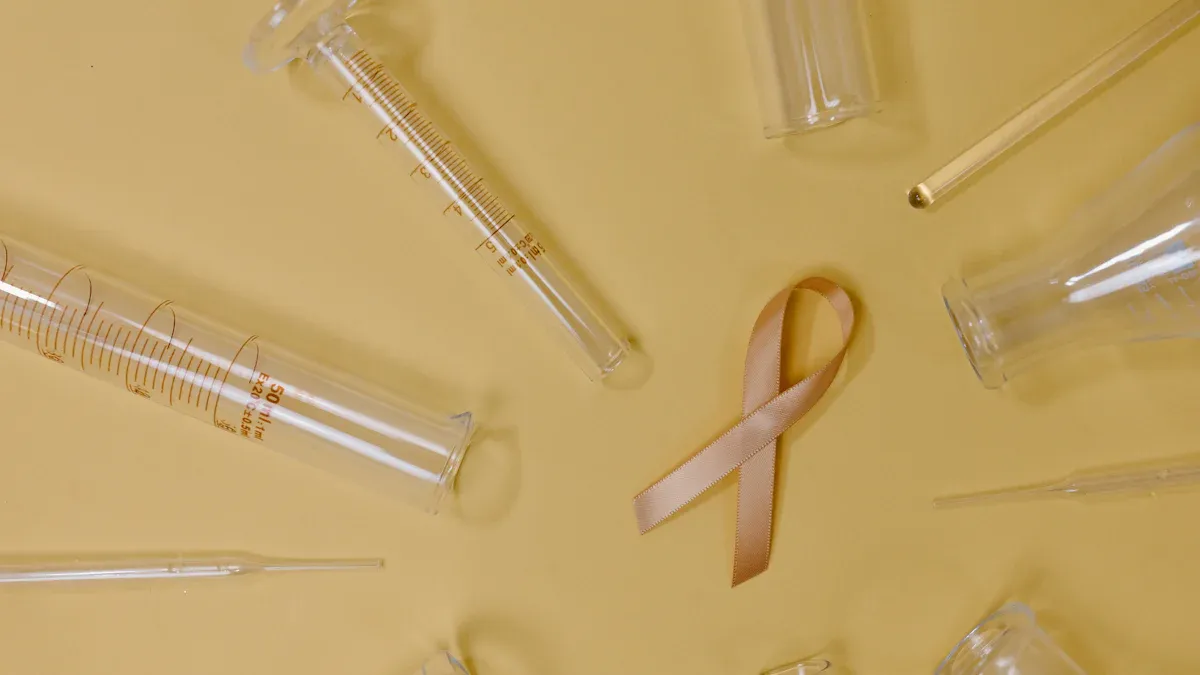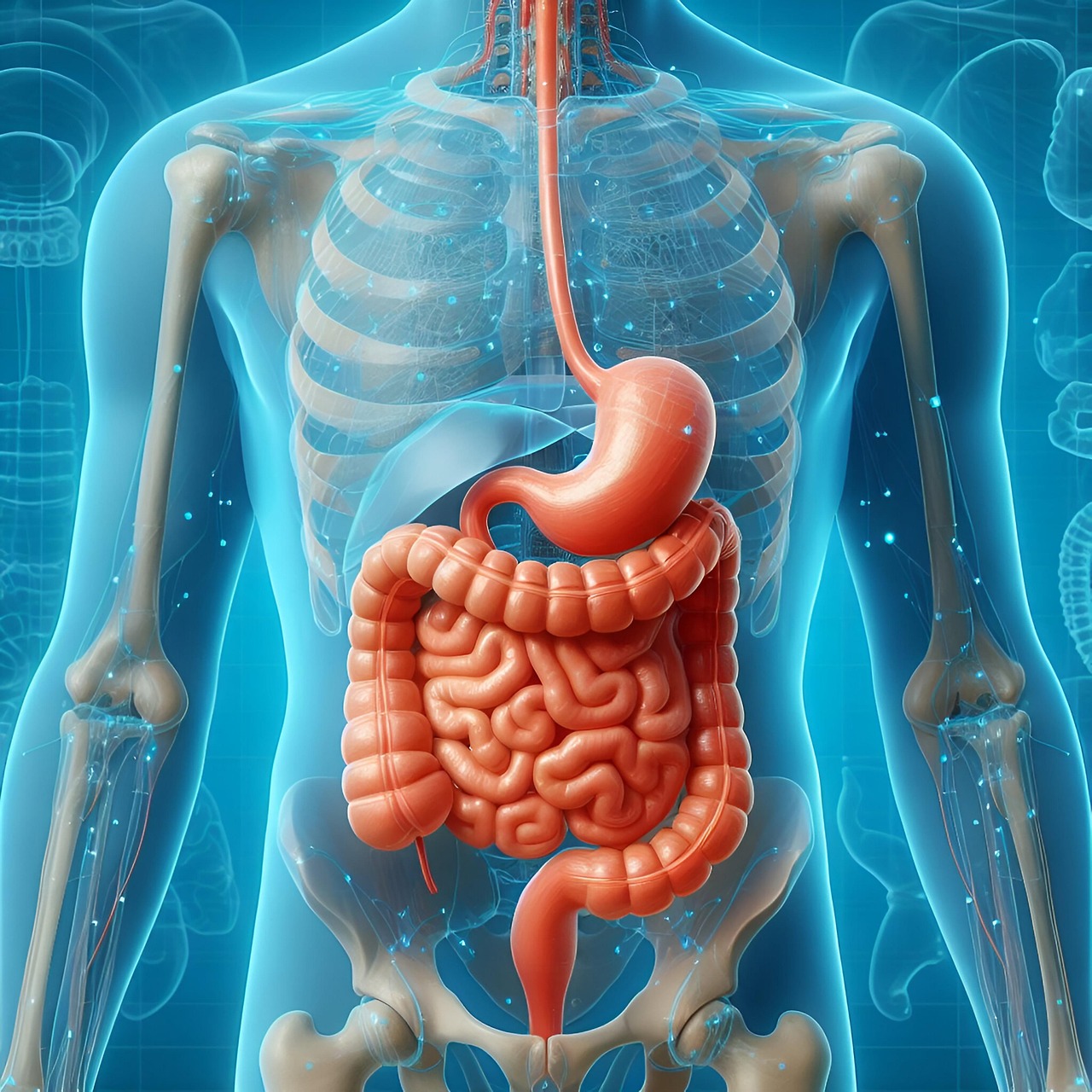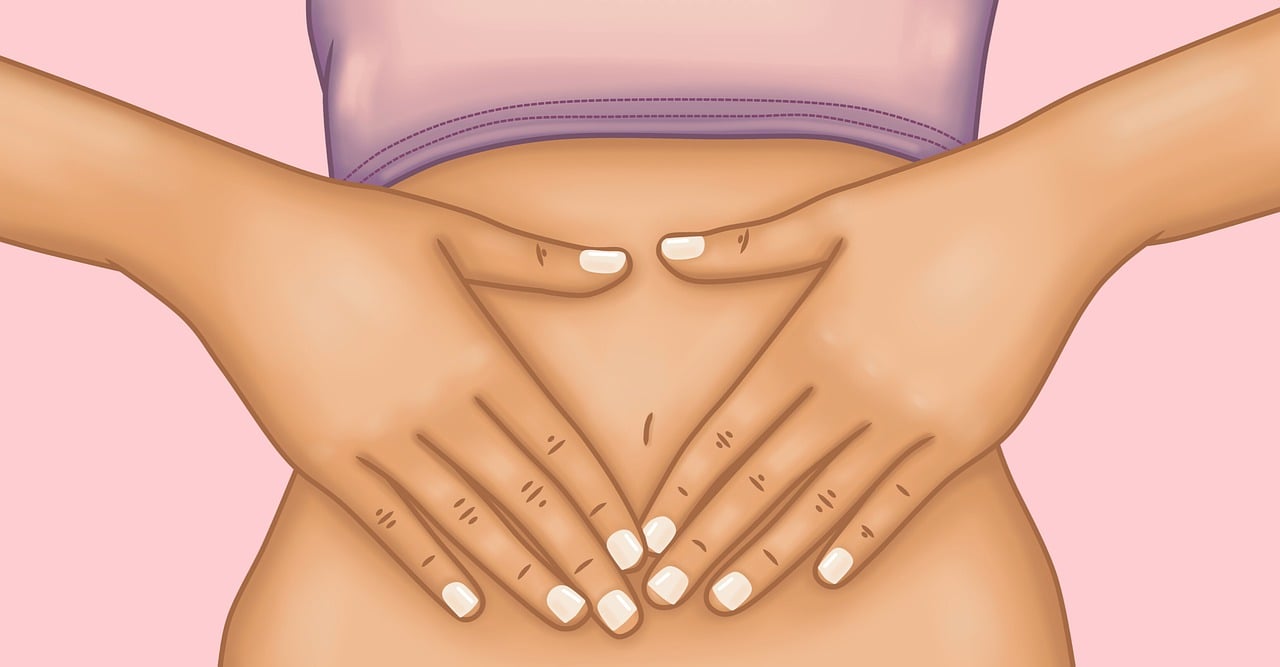What Are the Symptoms and Causes of Bladder Cancer

Bladder cancer often begins with noticeable symptoms like blood in your urine, frequent urination, or pelvic pain. It affects men more frequently than women, with white individuals at a higher risk compared to African American or Hispanic populations. The average age of diagnosis falls between 65 and 74 years, accounting for over 30% of new cases. Globally, regions like Europe and the United States report the highest incidence rates, while Sub-Saharan Africa has the lowest. Early detection of these symptoms can significantly improve outcomes, so paying attention to changes in your urinary health is crucial.
Key Takeaways
Seeing blood in your urine can mean bladder cancer. Tell a doctor if you see this.
Peeing often or feeling pain when peeing may show bladder problems. See a doctor if it keeps happening.
Smoking makes bladder cancer more likely. Stopping smoking helps your bladder stay healthy.
Eating fruits and vegetables can help lower your chance of bladder cancer.
Check-ups are important for people at higher risk. Finding it early can make treatment work better.
Symptoms of Bladder Cancer

Common Symptoms
Blood in the urine (hematuria)
One of the most common signs of bladder cancer is blood in your urine, also known as hematuria. This symptom may appear as pink, orange, or red discoloration in your urine. Often, it occurs without pain, making it easy to overlook. You should never ignore this warning sign, even if it happens only once.
Frequent or painful urination
Bladder cancer can cause you to feel the need to urinate more often than usual. You might also experience pain or a burning sensation during urination. These symptoms can sometimes be mistaken for a urinary tract infection, so it’s important to consult a doctor if they persist.
Urgency to urinate without results
You may feel an urgent need to urinate but find that little or no urine comes out. This symptom can disrupt your daily life and may indicate an underlying issue with your bladder health.
Tip: If you notice any of these symptoms, keep track of their frequency and severity. This information can help your doctor make an accurate diagnosis.
Less Common Symptoms
Pelvic or lower back pain
Pain in your pelvic area or lower back can occur as bladder cancer progresses. This discomfort often signals that the cancer has spread beyond the bladder.
Swelling in the legs
Bladder cancer can sometimes block lymphatic drainage, leading to swelling in your legs. This symptom is less common but should not be ignored.
Unexplained weight loss or fatigue
You might experience weight loss or feel unusually tired without a clear reason. These symptoms often appear in advanced stages of bladder cancer.
Symptom Progression
Early-stage vs. advanced-stage symptoms
In the early stages, bladder cancer symptoms often include blood in the urine, frequent urination, and pain during urination. As the disease advances, you may notice more severe signs like bone pain, loss of appetite, and fatigue. Symptoms related to metastasis, such as coughing, can also develop if the cancer spreads to other organs.
When to seek medical attention
You should seek immediate medical attention if you notice painless blood in your urine, persistent pain during urination, or an inability to urinate despite feeling the urge. Other warning signs include unexplained weight loss, fatigue, and lower back pain. Early diagnosis can significantly improve your treatment outcomes.
Note: Symptoms of bladder cancer can sometimes resemble those of urinary tract infections or bladder stones. If you’re unsure, consult a healthcare professional for clarity.
Causes of Bladder Cancer

Genetic Mutations
How mutations in bladder cells lead to cancer
Genetic mutations play a significant role in the development of bladder cancer. These mutations alter the DNA within bladder cells, causing them to grow uncontrollably. Over time, this abnormal growth can form tumors. Studies have identified 15 genetic loci associated with bladder cancer risk, particularly in European populations. This highlights the importance of genetic factors in understanding the disease.
Role of DNA damage and cell replication errors
DNA damage often occurs due to environmental factors or errors during cell replication. When your body fails to repair this damage, it can lead to mutations that trigger cancer. In bladder cancer, these mutations disrupt normal cell functions, allowing cancerous cells to multiply and spread. Research also shows that heritability accounts for about 30% of bladder cancer cases, emphasizing the combined influence of genetics and environment.
Environmental and Chemical Exposure
Smoking and its impact on bladder health
Smoking is the leading risk factor for bladder cancer. Smokers are three to four times more likely to develop the disease than non-smokers. Harmful chemicals in tobacco smoke enter your bloodstream and are filtered by your kidneys. These chemicals then accumulate in your bladder, damaging its lining and increasing cancer risk. Smoking is responsible for about half of all bladder cancer cases.
Exposure to industrial chemicals (e.g., dyes, rubber, leather)
Certain chemicals significantly increase your risk of bladder cancer. These include:
Aromatic amines, such as benzidine and beta-naphthylamine, used in the dye industry.
Arsenic, often found in contaminated drinking water.
Pioglitazone, a diabetes medication.
Aristolochic acid, present in some herbal remedies.
Workers in industries like rubber, textiles, leather, and plastics face higher exposure to these substances. If you work in these fields, protective measures can help reduce your risk.
Chronic Bladder Irritation
Repeated urinary infections or bladder stones
Chronic bladder irritation, caused by repeated infections or bladder stones, increases your likelihood of developing bladder cancer. This irritation leads to inflammation, which can damage bladder cells over time. Individuals with spinal cord injuries are particularly vulnerable due to their higher risk of infections and kidney stones.
Long-term use of catheters
Using catheters for extended periods can also irritate your bladder. This irritation creates an environment where cancerous changes are more likely to occur. If you rely on catheters, regular monitoring can help detect any early signs of bladder cancer.
Risk Factors for Bladder Cancer
Lifestyle Factors
Smoking and tobacco use
Smoking remains the most significant lifestyle factor linked to bladder cancer. Harmful chemicals in tobacco smoke enter your bloodstream and accumulate in your bladder, damaging its lining. Smokers face a three to four times higher risk of developing bladder cancer compared to non-smokers. Quitting smoking can significantly reduce this risk and improve overall bladder health.
Diet and hydration habits
Your diet and hydration choices also play a role in bladder cancer risk. Studies show that individuals with healthier lifestyle habits experience a 35% to 51% lower risk of developing the disease. While total fluid intake does not show a consistent link to bladder cancer, drinking more water may reduce the contact time between carcinogens and your bladder lining. However, excessive fluid intake could also introduce harmful substances deeper into the bladder wall.
Evidence Type | Findings |
|---|---|
Meta-analysis | No significant association between total fluid intake and bladder cancer risk. |
Subgroup Analysis | Higher fluid intake linked to decreased bladder cancer risk. |
Mechanism | Increased urination frequency may reduce carcinogen contact time. |
Contradictory Evidence | Excessive fluid intake may introduce carcinogens deeper into the bladder wall. |
Environmental Factors
Occupational exposure to harmful chemicals
Certain jobs expose you to chemicals that increase bladder cancer risk. These include industries like rubber, leather, textiles, and paint manufacturing. Workers such as machinists, firefighters, hairdressers, and truck drivers also face higher risks due to exposure to substances like aromatic amines and diesel fumes. If you work in these fields, wearing protective equipment can help reduce your exposure.
Arsenic in drinking water
High levels of arsenic in drinking water, particularly concentrations above 50 μg/L, are strongly associated with bladder cancer. Regions with poor water quality monitoring often report higher incidence rates. Testing and filtering your water can help minimize this risk.
Genetic and Medical Factors
Family history of bladder cancer
A family history of bladder cancer significantly increases your risk. If a first-degree relative has had the disease, your odds of developing it are nearly three times higher.
Family Relation | Odds Ratio (OR) | 95% Confidence Interval (CI) |
|---|---|---|
First-degree relative | 2.72 | 1.55 - 4.77 |
Second-degree relative | 1.71 | 1.22 - 2.40 |
Nonurologic cancers | 1.61 | 1.19 - 2.18 |
Previous cancer treatments (e.g., radiation or chemotherapy)
Certain cancer treatments can increase your risk of bladder cancer. Long-term use of the chemotherapy drug cyclophosphamide irritates the bladder lining, while radiation therapy to the pelvis raises the likelihood of developing the disease.
Age, gender, and ethnicity considerations
Bladder cancer primarily affects older adults, with the highest incidence occurring between ages 65 and 74. Men are more likely to develop the disease than women, and non-Hispanic White individuals face the highest risk among racial groups.
Age Range | Percent of New Cases |
|---|---|
<20 | 0.1% |
20–34 | 0.4% |
35–44 | 1.2% |
45–54 | 4.8% |
55–64 | 17.4% |
65–74 | 32.2% |
75–84 | 29.6% |
>84 | 14.3% |
Prevention Tips for Bladder Cancer
Lifestyle Changes
Quit smoking and avoid tobacco products
Smoking is the leading cause of bladder cancer, responsible for nearly half of all cases. Harmful chemicals in tobacco damage the bladder lining, increasing your risk. Quitting smoking can significantly lower this risk, even if you’ve smoked for years. If you don’t smoke, avoid exposure to secondhand smoke to protect your bladder health.
Maintain a healthy diet rich in fruits and vegetables
A diet filled with fruits and vegetables can help reduce your risk of bladder cancer. Research shows that a Mediterranean diet, which emphasizes vegetables, whole grains, and healthy fats, is particularly effective. Avoid a Western dietary pattern, as it has been linked to a higher risk of bladder cancer.
Dietary Habit | Association with Bladder Cancer Risk |
|---|---|
Mediterranean diet | Lower risk |
Increased vegetable intake | Lower risk |
Western dietary pattern | Increased risk |
Reducing Environmental Risks
Use protective equipment in high-risk occupations
If you work in industries like rubber, leather, or textiles, you may face exposure to harmful chemicals. Protect yourself by using personal protective equipment (PPE) such as gloves, masks, and goggles. Regularly inspect your PPE for damage and replace it as needed. Always wash your hands after handling chemicals and avoid eating or drinking in areas where hazardous substances are present.
Test and filter drinking water if necessary
Arsenic in drinking water is a known carcinogen linked to bladder cancer. Testing your water for arsenic levels can help you identify potential risks. If arsenic is present, install a point-of-use filter, such as a carbon block system, to remove it. Studies show that using these filters can reduce urinary arsenic levels by nearly 50%, significantly lowering your exposure.
Evidence Type | Description |
|---|---|
Study Focus | Community-led water-testing project |
Results | 47% drop in urinary arsenic levels after filter installation |
Health Impact | Increased use of filtered water for drinking and cooking |
Regular Health Monitoring
Routine check-ups for high-risk individuals
If you have risk factors like smoking or occupational exposure, regular check-ups can help detect bladder cancer early. These visits may include urine tests to check for blood or abnormal cells. Early detection improves treatment outcomes and increases survival rates.
Early screening for those with a family history
A family history of bladder cancer increases your risk. Screening methods like urine cytology, hematuria tests, and cystoscopy can help identify early signs of the disease. If you have a family history, discuss these options with your doctor to create a personalized screening plan.
Tip: Early screening is especially important if you experience symptoms like blood in your urine or frequent urination.
Bladder cancer symptoms, such as blood in your urine or changes in urination, should prompt immediate attention. Early signs include visible blood in urine, frequent or painful urination, and an urgent need to urinate even when your bladder is not full. Recognizing these symptoms early can lead to timely diagnosis and better outcomes.
You can reduce your risk by quitting smoking, limiting exposure to harmful chemicals, and maintaining a healthy diet rich in fruits and vegetables. Drinking plenty of water may also help flush out potential carcinogens. If you notice any concerning symptoms, consult a healthcare professional without delay.
Key Takeaway: Blood in urine is the most common warning sign of bladder cancer. Seek medical advice if you experience this or other urinary changes.
FAQ
What are the early warning signs of bladder cancer?
The most common early sign is blood in your urine, which may appear pink, orange, or red. You might also experience frequent urination, pain during urination, or an urgent need to urinate without results. These symptoms should prompt you to consult a doctor.
Can bladder cancer be cured if detected early?
Yes, early detection significantly improves the chances of successful treatment. Non-invasive bladder cancer often responds well to surgery, immunotherapy, or chemotherapy. Regular check-ups and prompt medical attention can help catch the disease in its early stages.
How does smoking increase the risk of bladder cancer?
Smoking introduces harmful chemicals into your bloodstream. These chemicals are filtered by your kidneys and stored in your bladder, where they damage the bladder lining. This damage increases the likelihood of cancerous cell growth.
Is bladder cancer hereditary?
A family history of bladder cancer can increase your risk. Genetic factors may make you more susceptible to the disease. If a close relative has had bladder cancer, you should discuss screening options with your doctor.
What steps can you take to reduce your risk of bladder cancer?
You can lower your risk by quitting smoking, avoiding exposure to harmful chemicals, and drinking plenty of water. A diet rich in fruits and vegetables also supports bladder health. Regular health check-ups are essential if you have risk factors.
Tip: Early lifestyle changes can make a big difference in reducing your risk of bladder cancer.
---
ℹ️ Explore more: Read our Comprehensive Guide to All Known Cancer Types for symptoms, causes, and treatments.
See Also
Exploring Anal Cancer: Symptoms and Underlying Causes
Key Symptoms and Causes of Acute Eosinophilic Leukemia
Essential Information on Symptoms of Adrenocortical Carcinoma
Identifying Causes and Risk Factors for Lung Adenocarcinoma
Insights into Symptoms and Treatment Options for Adrenocortical Adenoma
